From the earliest civilizations to the modern era, humans have always sought ways to measure and understand time. This article explores the evolution of timekeeping methods, from ancient sundials to sophisticated mechanical watches, highlighting how these innovations reflect both technological progress and cultural shifts. As we trace the development of timekeeping devices through history, we uncover a fascinating story of human ingenuity and its impact on society.
The Dawn of Timekeeping
Tracking time has always been crucial for human activities, guiding agricultural practices, religious rituals, and daily life. Ancient civilizations came up with ingenious methods to measure and keep track of time, long before the invention of clocks and watches. Let’s explore how these societies observed the passage of time through nature and the innovative devices they crafted.
The Egyptians, known for their monumental achievements like the Pyramids, were also pioneers in timekeeping. They relied heavily on solar and lunar cycles, dividing the day into 24 hours. Sundials were one of their earliest tools, using the shadow cast by the sun to determine the hour of the day. At night, they turned to water clocks, or clepsydras, which measured time through the regulated flow of water from or into a container.
Similarly, the Babylonians had a significant impact on how we understand time today, especially with their creation of the zodiac system that divided the sky into identifiable segments. They utilized both the sun and moon to create a lunisolar calendar, seamlessly coupling lunar months with the solar year through periodic intercalations.
The ancient Chinese civilization also made notable contributions with their innovative timekeeping devices. They developed a version of the water clock and introduced the incense clock, which indicated time through the length of incense sticks or coils that were burned. This method gave an aromatic way to track passing hours, essential in temples and palaces.
On the American continent, the Maya civilization was exceptionally skilled in astronomy and calendar-making. They had an intricate calendar system combining a 260-day ritual cycle with a 365-day solar year to create a dual-calendar that guided their agricultural and ceremonial life. Their understanding of the solar year was remarkably accurate, almost matching our modern Gregorian calendar.
Sundials continued to be a universal tool across cultures, with variations found in Roman, Greek, and Persian civilizations. The Greeks, in particular, made significant advancements in the science of timekeeping. They developed more complex forms of sundials and introduced the concept of hours of equal length – a considerable leap from temporal hours that varied with the seasons.
Ancient Rome contributed by popularizing sundials and water clocks throughout their empire, adapting technologies from conquered territories. They placed sundials in public places, integrating timekeeping into social life, which underscores the importance of communal time awareness in ancient societies.
Lastly, devices like the Antikythera mechanism, an ancient Greek astronomical calculator, point toward an advanced understanding of celestial movements. It served not only as a tool for signaling the passage of time but also as a guide for navigating the complex movements of the stars and planets.
In conclusion, from sundials carved in stone to sophisticated water clocks and celestial calculators, ancient civilizations demonstrated remarkable innovation in tracking time. These methods reflect not only the ingenuity of early societies but also their deep connection to the rhythms of the natural world around them.
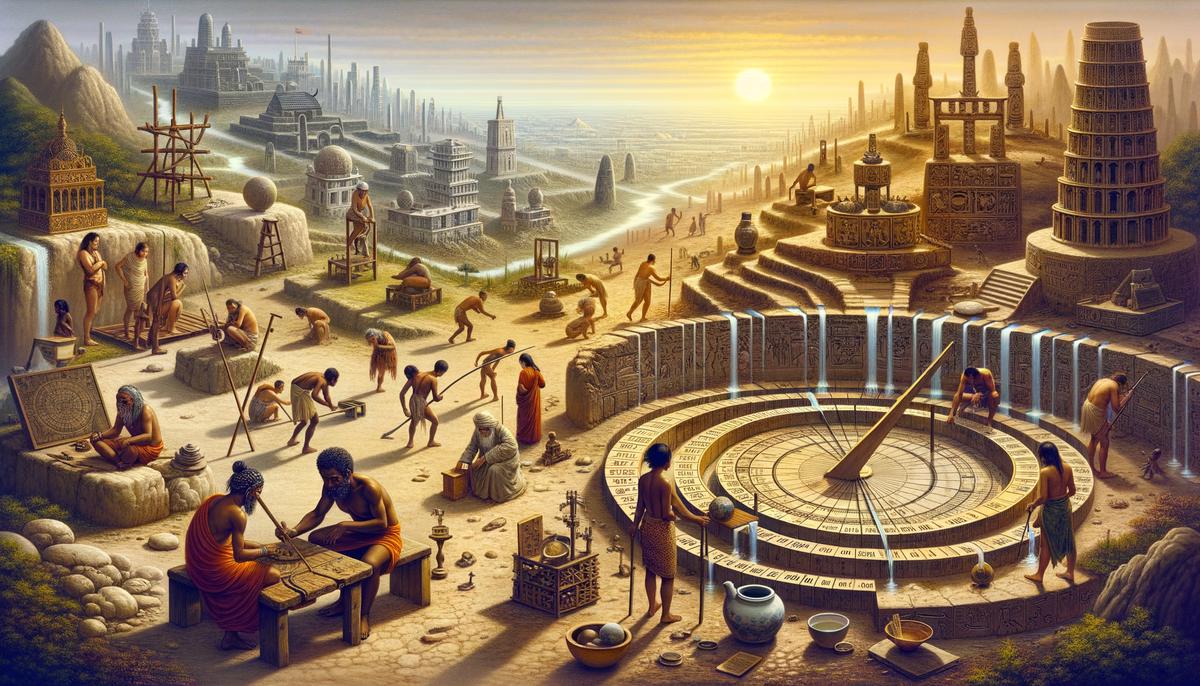
The Invention of the Mechanical Clock
The transformation of society ignited by the introduction of the mechanical clock cannot be overstated. Around the 14th century, with its invention, an era began where time could be measured with unparalleled precision. This innovation not only altered the daily routines of people but also reshaped commerce, navigation, and the very fabric of social order.
Before the widespread use of mechanical clocks, timekeeping was largely dictated by the sun’s position or by complex devices that were often impractical for everyday use. The mechanical clock introduced a method that was reliable and, more critically, uniform. Everyone could agree on what hour it was, a concept crucial for organizing society on a larger scale.
Commerce experienced one of the most immediate impacts. With the ability to accurately measure hours, business hours could be standardized, and markets operated with more predictability. This regularity encouraged growth and innovation in trade practices. Importantly, it enabled the accurate logging and management of debt, credit, and labor hours, practices at the heart of modern economies.
Navigation saw revolutionary changes with this innovation. Long-distance travel, especially by sea, was fraught with uncertainty. The ability to measure time accurately became a game-changer. This was because knowing the exact time enabled navigators to determine their longitudinal position with greater accuracy, making sea voyages safer and more reliable. It laid down the foundational principle for the longitude problem’s eventual solution in later centuries, which had a profound effect on exploration and globalization.
The social structure of communities transformed as well. The mechanical clock led to a regulated society where work, prayer, and even leisure activities became scheduled to the minute. The agrarian lifestyle, which revolved around the cycles of nature, gradually made way for an industrial mindset that idolized efficiency and productivity. This shift had profound implications for personal identity and community life, as people began to see their time as a commodity that could be spent, saved, or wasted.
Educational institutions and religious practices adapted to this new measurement of time. Monasteries were among the first to embrace mechanical clocks, ringing bells at specific times to mark the hours of prayer. This practice eventually spread to civilian towns and cities, where public clocks would herald the passing of time for all residents, dictating the rhythm of daily life.
In terms of technological interplay and advancement, the mechanical clock acted as a catalyst for mechanical engineering and precision manufacturing techniques. The complexity and need for accuracy in clock making spurred innovations that would be crucial for the development of future technologies.
In sum, the rise of the mechanical clock was more than just an advancement in timekeeping; it was a pivotal turn in human history that fundamentally changed how societies functioned, viewed time, and interacted with the world. Its influence permeates various aspects of life, laying the groundwork for the modern world’s temporal organization. The mechanical clock didn’t just change how we tell time—it changed our relationship with time itself, marking a profound shift in civilization’s progress.
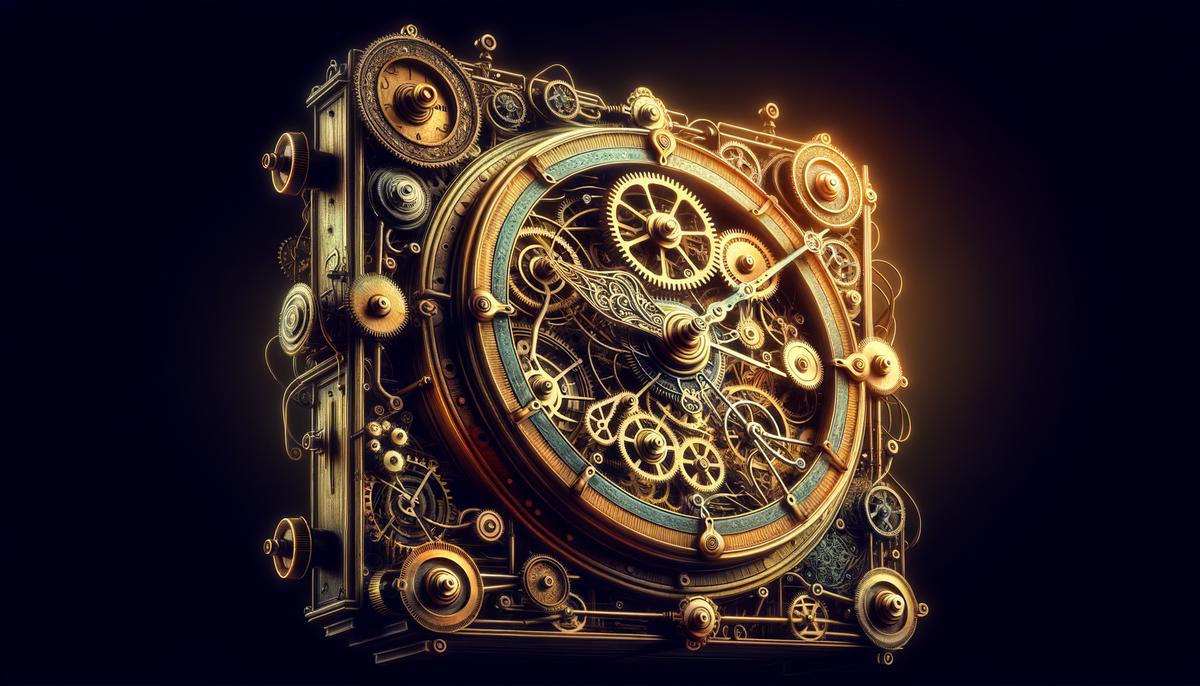
The Age of Precision: The Chronometer
The marine chronometer stands as a monumental invention in the history of human progress, distinguishing itself by solving a long-standing problem: accurately determining a ship’s position at sea. This device, while seemingly straightforward, played a crucial role in enabling sea voyages to become safer, more efficient, and ultimately reshaping global trade, exploration, and the political landscape of the world.
Before the marine chronometer, sailors relied on dead reckoning and celestial navigation to estimate their position. This method was fraught with uncertainty and peril since accurate longitude was difficult to determine. Many ships were lost, along with their crews and cargos, not because of inadequate seamanship but due to the inability to ascertain their precise location in the vastness of the oceans.
The breakthrough came in the 18th century, thanks to the work of British clockmaker John Harrison and others. Harrison painstakingly developed a timepiece resistant to the pitching and rolling of the sea, changes in temperature, and humidity—all of which could disrupt a clock’s accuracy. His invention, known as H4, showcased remarkable precision, losing only seconds over long sea voyages, making it an unprecedented tool for calculating longitude.
Here’s how the marine chronometer revolutionized navigation: Sailors set the chronometer to Greenwich Mean Time before leaving port and kept it running throughout their journey. By comparing the local noon (determined by the sun’s highest point in the sky) against the time on the marine chronometer, navigators could calculate their longitude. This method did not rely on favorable weather or clear night skies for celestial navigation methods and significantly reduced the guesswork in determining a ship’s position.
The advent of the marine chronometer was not just about improving navigation. It facilitated the mapping of the world with greater accuracy, leading to the discovery of new lands and sea routes. This enhanced mapping contributed to more reliable and faster voyages, fueling an explosion in global trade. Commodities that were once rare luxuries became accessible to wider populations, altering diets, economies, and lifestyles worldwide.
Moreover, the ability to precisely navigate and claim territories bolstered the spread of empires during the Age of Exploration. European powers, equipped with this technology, could establish colonies across Asia, Africa, and the Americas, in turn, reshaping indigenous cultures and the geopolitical boundaries that continue to define the modern world.
The marine chronometer also sparked advancements in science and technology. The quest for navigation accuracy stimulated developments in astronomy, mathematics, and physics. Knowledge of the world’s geography expanded, feeding the human thirst for discovery and understanding of the planet.
In societal terms, the predictability brought by precise navigation underpinned the expansion of naval power and military strategy, enabling nations to deploy ships with confidence across great distances. It laid the foundation for international maritime laws and norms that govern the open seas to this day.
Without the marine chronometer, many aspects of modern life would look profoundly different. It not only marked a pivotal shift in how humans interacted with the sea but it also catalyzed a global interconnectivity that continues to shape economic, political, and cultural exchanges across continents. The precise measurement of time, coupled with its application to maritime navigation, stands as a testament to human innovation and its capacity to overcome the seemingly insurmountable barriers that nature poses.
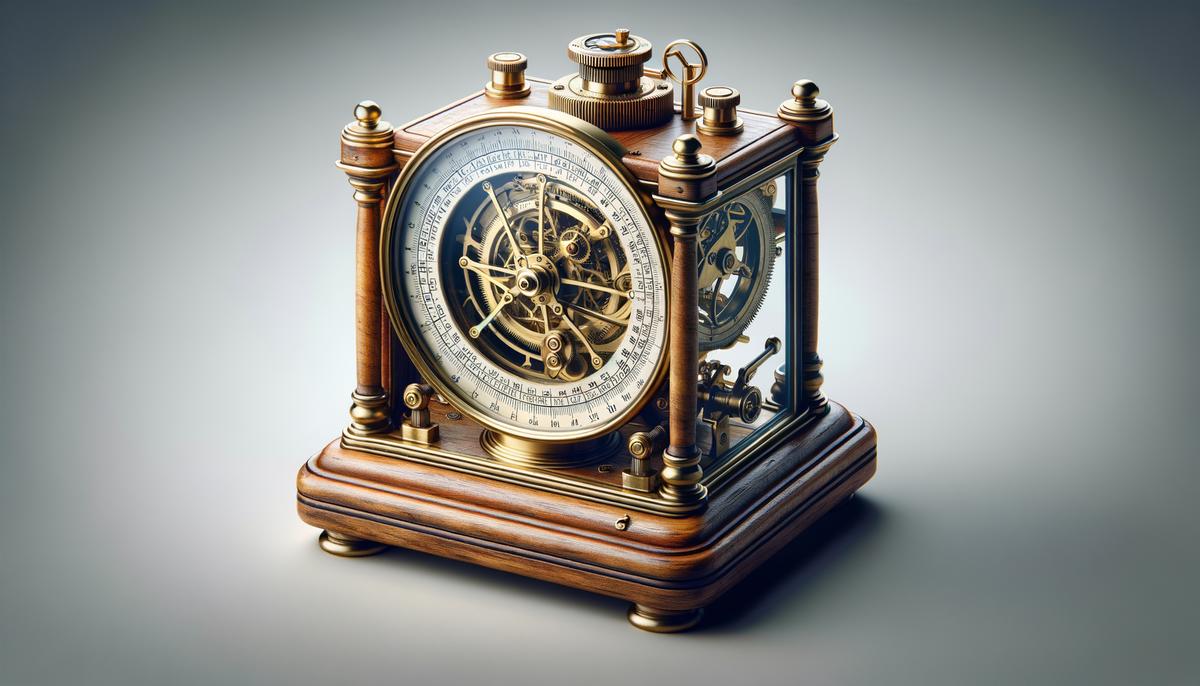
The Evolution of Watchmaking
The watch, initially a tool for telling time, journeyed towards becoming an art form through the craftsmanship and creativity stimulated by the Renaissance period. The Renaissance, a time of rebirth in arts, culture, and science across Europe, also ignited innovation in watchmaking. Artisans began to view watches not just as timekeeping devices but as miniature canvases where they could express their craftsmanship and art.
In the 16th century, watchmakers started to incorporate artistic elements into their designs. Watches were no longer plain and functional; they became ornate, embellished with precious metals, gemstones, and intricate engravings. This era marked the beginning of watchmaking as an art form. Craftsmen took pride in designing mechanisms that were not only accurate but also aesthetically pleasing. The competition among watchmakers to create the most beautiful and precise watch fueled advancements in both the technical and artistic aspects of watchmaking.
The evolution of watchmaking into an art form is also tied to the development of personal watches. Before the 17th century, timekeeping devices were mostly large and communal. However, with advancements in miniaturization techniques, watches became personal items. This shift allowed watchmakers to cater to individual tastes, leading to more personalized and artistic designs. Personal watches became symbols of status and personal style, reflecting the social standing and aesthetic preferences of their owners.
The pocket watch era, spanning from the 17th to the 19th century, was the golden age of artistic watchmaking. Pocket watches were not just timekeepers; they were fashion statements and personal treasures. The cases of these watches became canvases for elaborate art featuring themes from nature, mythology, and daily life. Engraving, enamel work, and jewel setting further enhanced their beauty, making each watch a unique piece of art.
The transition to wristwatches in the 20th century opened new opportunities for artistic expression. The smaller canvas of the wristwatch demanded even greater precision and innovation from artisans. The Art Deco movement of the 1920s and 1930s, known for its bold geometric shapes and lavish ornamentation, significantly influenced watch design during this period. Watch faces and cases reflected the Art Deco aesthetic, with clean lines, contrasting colors, and novel materials such as stainless steel and chromium.
In modern times, the art of watchmaking continues to evolve with technology. Today’s watchmakers merge traditional craftsmanship with cutting-edge technology to create watches that are both functional and artistic masterpieces. Limited edition watches, collaborations with artists, and custom designs are testaments to the ongoing fusion of art and watchmaking. Watch brands like Patek Philippe, Audemars Piguet, and Vacheron Constantin are revered not just for their technical excellence but for their dedication to maintaining watchmaking as an art form.
Throughout history, watchmaking has mirrored humanity’s fascination with beauty and precision. The evolution of watches from practical instruments to symbols of artistry and prestige reflects the relentless human pursuit of blending functionality with aesthetics. As we continue to push the boundaries of what is technically possible, the enduring legacy of watchmaking as an art form remains a testament to our collective creativity and craftsmanship.
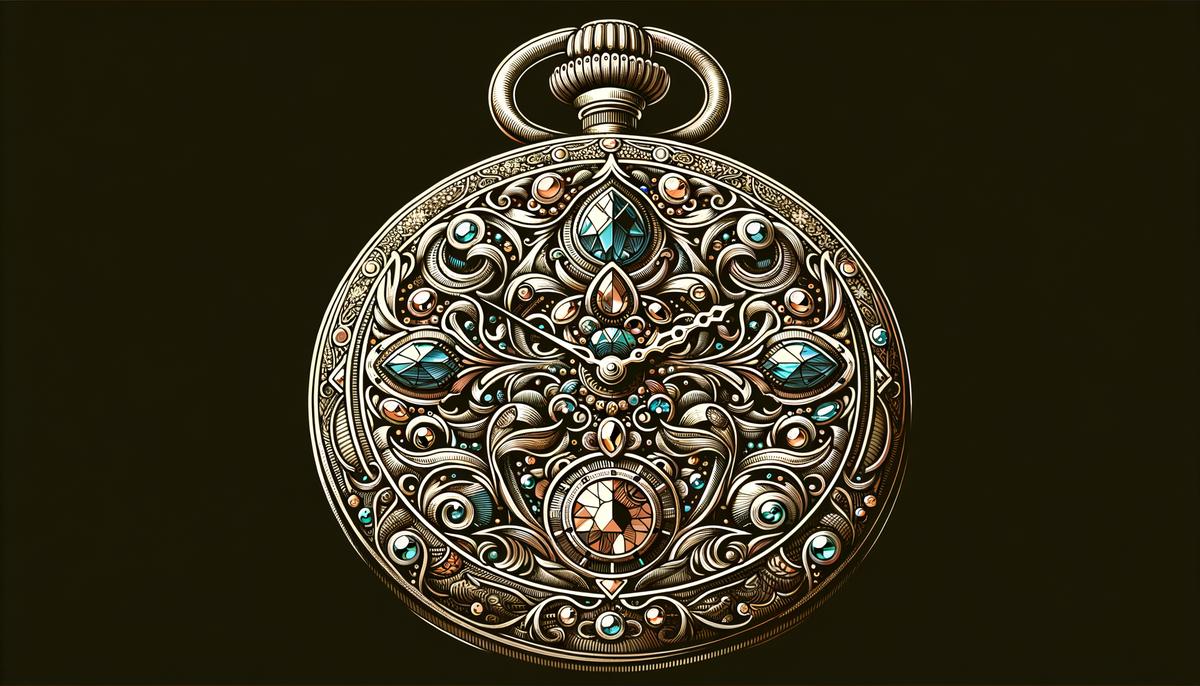
Quartz Crisis and the Renaissance of Mechanical Watches
The quartz crisis began in the late 1960s and early 1970s, shaking the foundations of the traditional watch industry to its core. This period of turmoil was triggered by the introduction of quartz timepieces, which were powered by batteries and used quartz crystals to keep time. The Swiss, who had dominated the world of watchmaking with their mechanical watches, were caught off guard. Quartz watches were not only more accurate but also cheaper to produce and maintain than their mechanical counterparts.
Japanese companies, most notably Seiko, led this technological revolution. In 1969, Seiko introduced the Astron, the world’s first quartz wristwatch, marking the dawn of a new era in horology. The simplicity and efficiency of quartz technology allowed for mass production, significantly lowering costs. Consumers worldwide were quick to adopt these new gadgets that offered unprecedented accuracy at a fraction of the price of mechanical watches.
As quartz watches began to flood the market, Swiss watchmakers suffered greatly. Thousands of watchmakers lost their jobs, and many historic brands either went bankrupt or were absorbed by larger conglomerates. By the mid-1980s, it seemed as though the age of mechanical watches had come to an end.
However, mechanical watches made a surprising comeback towards the end of the 20th century. This revival was fueled by several factors that rekindled interest in traditional watchmaking. Firstly, the luxury segment of the market began to flourish. Consumers looking for exclusivity and craftsmanship turned their attention back to mechanical watches, viewing them as status symbols and investments rather than mere timekeepers.
Marketing strategies played a crucial role in this turnaround. Brands started to highlight the artistry, tradition, and intricate craftsmanship involved in making a mechanical watch. Watch enthusiasts and collectors were drawn to the complexity and the manual effort required to create these beautiful pieces. Prominent watchmakers began to emphasize their heritage and the long hours of manual labor that went into each piece. This storytelling approach created an emotional value that quartz watches couldn’t match.
Innovation also contributed to the resurgence of mechanical watches. The industry saw the introduction of new materials, such as silicon, which improved the performance and durability of mechanical movements. Watchmakers experimented with design, blending traditional aesthetics with modern elements to appeal to a broader audience.
The rebirth of mechanical watches is a testament to the enduring appeal of craftsmanship and tradition in the face of technological change. While quartz watches continue to dominate in terms of sheer numbers, mechanical timepieces have reclaimed their status as luxury items and works of art. Watch aficionados cherish them for their complexity, beauty, and the skill required to create them, ensuring that this age-old craft not only survives but thrives in the modern era.
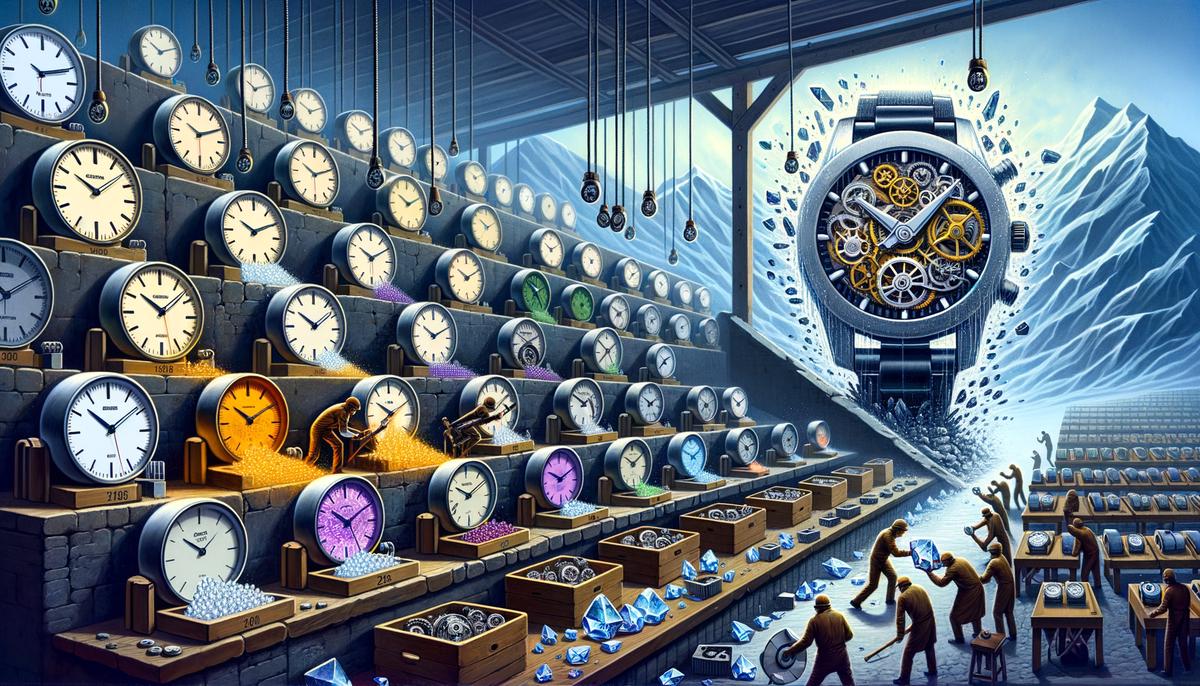
The story of timekeeping is more than just a tale of technological advancement; it is a narrative that intertwines with the very fabric of human civilization. Each chapter in the history of horology reveals not only our quest for precision but also our desire to express creativity, status, and identity through the artistry of watches. As we look towards future innovations in timekeeping, it’s clear that this journey reflects our ongoing pursuit to balance practicality with beauty, demonstrating that our relationship with time is as much about how we measure it as it is about how we value every moment.
Writio: The ultimate AI content writer for websites. Say hello to quality content with this article written by Writio.
Leave a Reply